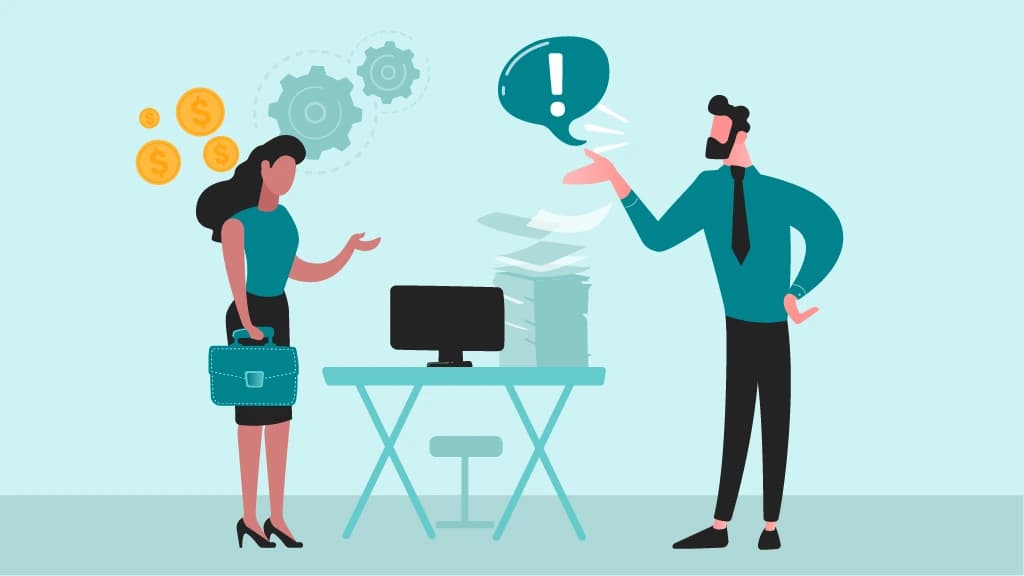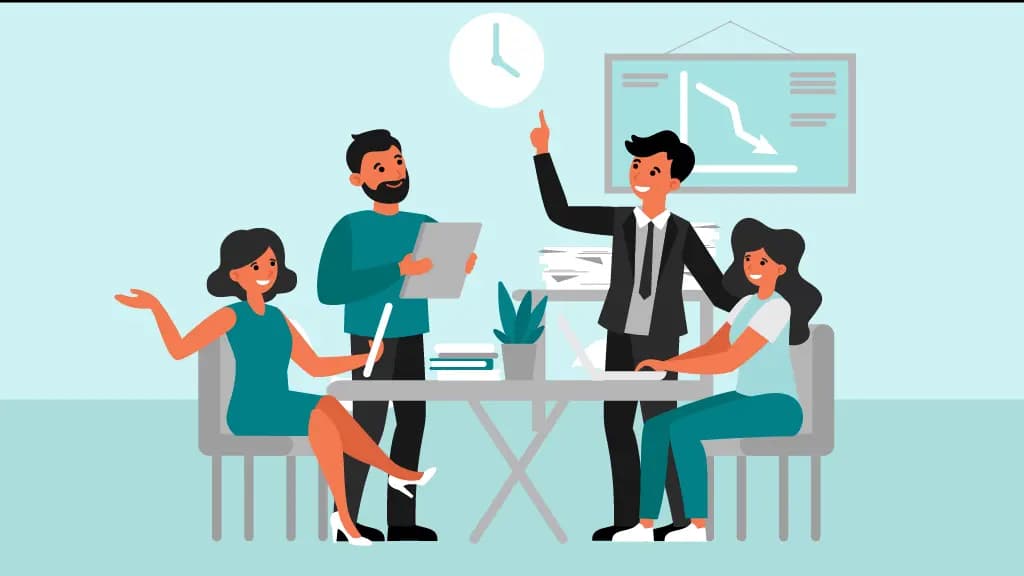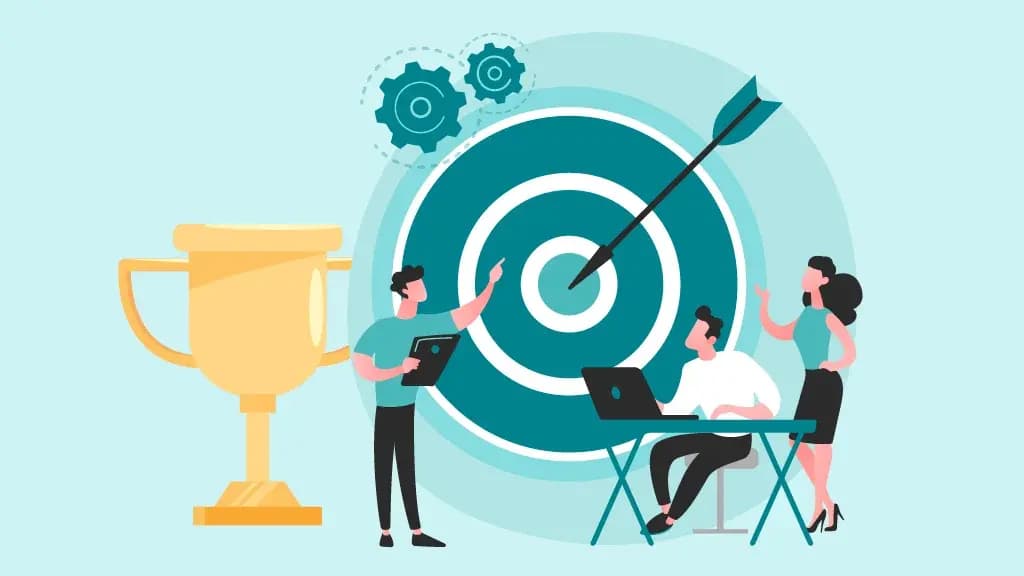
Times are changing, and companies must break the conventional mold of thanking the employees. We need rewards that bring smiles to people’s faces. A “thank you” is not enough. Reward them with real gifts or something that motivates them to do better. The modern workplace demands something more than pleasing words.
What is an Employee Rewards Program?
An employee reward program is a system that rewards employees with special rewards or gifts for performing well. The rewards make the employees feel happy and want to continue performing well. The system is designed to balance what the company desires and what the employees do. If people are thanked for working hard, they will feel proud and work even harder. This ensures the entire team performs better and feels happy about their job.
Difference Between Rewards and Recognition
Recognition and rewards are both ways of saying “thank you” to workers. Recognition is pleasant words like “great job” or a certificate. It makes workers feel special and that their work is valuable.
Rewards are different; they are physical things like money, gift cards, or a day off. These are given to make individuals want to do their best. Using both ways helps companies keep workers happy and working hard every day.
Best Staff Rewards Program Types for Modern Companies
The best staff rewards program blends traditional practices with modern approaches to keep employees motivated, loyal, and genuinely happy at work.
Traditional Employee Rewards Programs
Some traditions never lose their charm, and the same goes for certain employee rewards programs. These methods have stood the test of time and still work wonders when done right:
- Performance-Based Bonuses and Salary Increases: Rewarding steady performance with financial growth is the best way to show that you are valued. It creates a clear link between work and reward and boosts morale.
- Annual Recognition Awards and Certificates: Celebrating milestones, like “Employee of the Year” or long-service awards, creates moments of pride and strengthens belonging.
- Company-Sponsored Training and Development: Investing money into employees' talents indicates a dedication to their development and gives them hope for a future with the company.
Modern Rewards Program for Employees
Today’s workforce craves flexibility, balance, and well-being. Modern rewards programs for employees focus on more than money—they improve quality of life and address evolving workplace needs:
- Flexible Work Arrangements and Additional PTO: Time is the most valuable gift. Offering remote work options or an extra day off creates trust and makes employees feel respected.
- Wellness Programs and Mental Health Support: From gym memberships to counselling sessions, these initiatives show that a company cares about both physical and emotional well-being.
- Technology Stipends and Equipment Upgrades: In a digital-first world, providing tools that make work smoother and more comfortable is a reward that employees truly appreciate.
Top Experiential Rewards for Employees
One of the biggest shifts in company rewards programs is the rise of experiential rewards for employees. Unlike material gifts, these experiences leave lasting memories and emotional connections that inspire long-term loyalty. Examples include:
- Team-Building Retreats and Adventure Activities: Shared experiences outside the office—like hiking, escape rooms, or cooking classes—strengthen bonds and spark creativity.
- Professional Conferences and Networking Events: Attending industry events not only rewards employees but also equips them with fresh ideas and connections.
- Cultural Experiences and Educational Workshops: These experiences, which range from art exhibits to specialized training, benefit staff members both personally and professionally.
- Volunteer Opportunities and Community Service Days: Purpose-driven rewards provide employees the chance to contribute to causes they care about, creating pride and alignment with company values.
When modern organizations design a staff rewards program, the key is balance. Blending traditional employee rewards programs with fresh, personalised experiences creates a culture where people feel valued, motivated, and excited to contribute.
Why Companies Implement Rewards Programs
- Make Employees Want to Work More: Employees become satisfied and want to work even better when rewarded.
- Help People Work Better: Providing challenges and satisfying rewards for accomplishment makes everyone work their duties even better.
- Retain Good Employees: Employees who are satisfied and feel appreciated don't want to switch companies.
- Create a Happy Workplace: Rewarding people makes the team feel good and share the same values.
Key Benefits of an Employee Rewards Program
1. Boosting Employee Motivation and Morale
- Saying “thank you” with rewards makes employees feel happy and motivated to keep doing great work.
- When individuals feel appreciated and valued, they love to do their job and bring positive energies to the team.
2. Enhancing Productivity and Performance
- Rewards motivate employees to work a little harder and go beyond their usual job roles.
- When clear goals and rewards are in place, people are excited to meet those goals and do their best.
3. Strengthening Employee Engagement and Retention
- Employees who feel appreciated and noticed have more fun at work and prefer to stay longer in the company.
- An effective reward scheme ensures employees are happy, with less likelihood to quit.
4. Fostering a Positive Workplace Culture
- Rewarding people fosters a work culture where people feel valued and respected.
- When people witness others being rewarded, it encourages collaboration and makes every employee motivated to perform well.
5. Supporting Company Goals and Values
- When rewards align with the company's objectives, employees are more likely to move in the correct direction.
What Makes an Employee Reward Program Successful?
- Simple Goals That Align with Company Strategies
An excellent reward program has easy-to-grasp goals. These align with the company’s wants, so everyone works towards the same big win. - Make It Personal and Fair
When rewards are meaningful to each person, it means that they matter. Having everyone have an equal chance makes it feel friendly and fair to all. - Be Fair and Simple to Understand
Rewarding consistently each time and informing individuals how they can gain rewards establishes trust within the system for the team. - Offer Rewards Immediately
Rewarding an individual promptly after doing something good immediately makes them feel good. They don’t have to wait so long to feel proud. - Leaders Ought to Participate and Share Information
When managers join in and talk about the benefits, it shows that the company cares. Talking openly makes everyone aware of how it works.
Best Employee Rewards Program Ideas for Companies
1. Monetary Rewards
- Bonuses for Exceeding Targets: Financial incentives for surpassing performance goals.
- Salary Increases for Consistent Performance: Regular pay raises for sustained high performance.
- Gift Cards for Specific Achievements: Prepaid cards for milestones or exceptional contributions.
2. Non-Monetary Rewards
- Additional time Off: Extra vacation days or flexible work hours.
- Company-Sponsored Volunteer Days: Paid time off to participate in community service activities.
- Employee of the Month Awards: Public recognition and perks for outstanding employees.
3. Tangible Rewards
- Company Merchandise: Branded items like apparel or accessories.
- Electronics or Gadgets: High-value items like tablets or smartwatches.
- Subscription Services: Access to streaming services or professional journals.
4. Experiential Rewards
- Team Outings: Group activities like escape rooms or sports events.
- Wellness Retreats: Health and wellness-focused getaways.
- Volunteer Opportunities: Paid time off for community service.
5. Social Recognition
- Peer-to-Peer Recognition: Platforms for colleagues to acknowledge each other's contributions.
- Social Media Shout-outs: Public recognition on company social media channels.
- Award Ceremonies: Formal events to celebrate employee achievements.
Why Experiential Rewards for Employees Work Better
Unlike cash bonuses or generic vouchers, experiences leave a personal and emotional impact that employees truly remember. Here’s why they work so well:
- Create lasting memories that strengthen company loyalty: When people look back on a fun retreat, a cultural event, or even a skills workshop, they associate those positive memories with their company. This builds deeper loyalty than a one-time financial reward ever could.
- Offer personal growth and skill development opportunities: Experiences often help employees grow as individuals. Attending a conference, joining a workshop, or participating in community service activities provides them with new viewpoints and employable abilities that can be applied in their careers..
- Build stronger relationships between team members: Shared experiences nurture bonds. Whether it is a team-building adventure or a company-sponsored outing, experiential rewards bring employees closer, encouraging collaboration and trust.
- Align with employee values around work-life balance: Today’s workforce values balance and well-being. Rewards that provide meaningful experiences outside of work—like wellness retreats or volunteer opportunities—show that the company respects those values.
How Different Companies Structure Their Staff Rewards Program
Every business has its own way of shaping a staff rewards program. The structure often depends on the size of the company and the industry it operates in. Here’s a closer look at how different organisations approach rewarding their people.
Small Business Employee Rewarding Programs
Small businesses can design meaningful and genuine employee reward programs even without big funds. A bit of imagination goes a long way:
- Peer-to-peer recognition systems: Encouraging colleagues to recognise each other builds a culture of appreciation.
- Flexible work arrangements: Offering flexibility with schedules or remote work can be more valuable than financial perks.
- Professional development opportunities: Sponsoring short courses or workshops helps employees grow their skills.
- Simple milestone celebrations Celebrating birthdays, work anniversaries, or team achievements fosters a sense of belonging.
Enterprise Company Rewards Programs
Big businesses frequently have the means to design tiered, structured programs that involve employees at all levels. Their company rewards programs often consist of:
- Tiered reward systems based on performance levels: High achievers are rewarded differently from consistent performers, ensuring fairness and motivation.
- Department-specific reward program employees initiatives: Different teams often value different things, so rewards are customised to match their goals.
- Global recognition platforms for remote teams: With distributed workforces, enterprises use digital tools to make recognition visible across regions.
- Comprehensive benefits packages including experiential rewards for employees From travel vouchers to wellness retreats, employees are rewarded with experiences that enrich their lives.
Industry-Specific Employee Reward Programs
Every industry has unique demands, and effective employee reward programmes reflect those differences. Examples include:
- Technology companies focus on innovation rewards and learning stipends: Encouraging creativity and continuous learning keeps tech professionals motivated.
- Healthcare organizations emphasize wellness and mental health benefits: Supporting staff with emotional and physical well-being initiatives improves retention.
- Retail businesses often use customer service excellence rewards: Recognising employees who create outstanding customer experiences builds loyalty.
- Manufacturing companies highlight safety achievement programs Rewarding safe practices reinforces responsibility and keeps employees engaged in high-risk environments.
A staff rewards program should never feel like a “one-size-fits-all” solution. The key lies in tailoring employee rewards programmes to meet the real needs and values of the people behind the business.
How to Create Effective Reward Programs for Employees
- Understand What Your Company and People Like
To create a good reward program, first, figure out what your company is all about and what your employees love. When the rewards are associated with what others care about, they are more enjoyable and authentic. You can ask your employees questions through surveys or meetings to find out what makes them happy and energetic. - Make Easy-to-See Goals
Set straightforward and quantifiable goals. These should be what the company desires and help with personal growth. Monitoring these goals on a regular basis allows you to notice what is going well and what needs to be changed. Ensure that the goals are not too difficult and are achievable. - Develop a Clear Reward Plan
Design with levels so people can understand how to earn rewards. Show the steps people have to follow to win rewards. This is easy to observe and makes people strive harder to level up. - Select the Appropriate Types of Rewards
Select different types of rewards for different people. Some prefer money or gift cards. Others prefer learning or health rewards. Provide many options so everyone will be glad and included. Combining rewards makes the scheme enjoyable for everyone. - Use Technology Tools to Help
With innovative tools such as Agentic AI, rewarding is a breeze. These tools can monitor progress, give rewards in seconds, and inform you what works. Leveraging technology, you make the rewards easy and tailored to the new digital environment.
Implementation timeline for launching employee rewarding programs
Launching employee rewarding programs requires planning and realistic timelines. A phased approach ensures that nothing is rushed and employees receive the best experience:
- First month: Research what employees value most through surveys and focus groups. Gather insights that shape the design of the staff rewards program.
- Second month: Build the structure of the rewards, including tiers, eligibility criteria, and communication strategies. Select the right mix of monetary, non-monetary, and experiential rewards for employees.
- Third month: Introduce technology or platforms that support company rewards programs, ensuring they are simple and accessible. Train managers and teams on how the system works.
- Fourth month: Roll out the program in stages. Start with a pilot team or department before expanding to the whole organisation.
- Ongoing: Continuously review participation, gather feedback, and adjust the program to keep it relevant and engaging.
A clear timeline helps build momentum and ensures employees stay excited from the launch through to long-term participation.
How to Boost Participation in Employee Reward Programs
- Tell Everyone Why It’s Good
When you let people know that the reward system benefits them, they will be eager to join. Give positive reviews of rewarded individuals and how their day was improved as a result. That will encourage other people to join. - Let Them Help Make the Plan
If you get others involved to assist in figuring out the reward plan, they will be more interested in it. If people believe it’s figured out for them, they want to be included. - Make Friends Say “Good Job” Too
Let the workers compliment each other. When workers compliment, the team turns positive. Some software makes them complement easily, and everyone is cheerful. - Give Different Kinds of Gifts
Each person desires something different. Some desire treats, others desire a day off or money. To give options means everyone receives something they enjoy, and they are more likely to engage. - Get Ideas and Make It Better
Always ask others for their ideas. Next, make the reward plan better using their responses. More individuals will want to join and stay happy if you constantly improve it.
Budget planning guide for staff rewards program
A well-designed staff rewards program should be both impactful and sustainable. Budgeting is not about spending the most money but about allocating resources in a way that maximises engagement. Here’s a simple guide:
- Set a percentage of payroll: Many organisations allocate between 1 and 3 percent of payroll for employee rewards programmes.
- Balance short-term and long-term rewards: Spot rewards like gift cards may cost less but create instant motivation, while long-term investments such as training programs or wellness benefits bring lasting value.
- Prioritise inclusivity: Choose rewards that appeal to different personalities. Providing a mix of monetary and experiential rewards for employees ensures everyone feels valued.
- Negotiate partnerships: Collaborate with vendors, fitness centres, or online platforms to provide rewards at discounted rates.
Careful planning ensures the budget is used effectively, making the rewards meaningful without putting pressure on the company’s finances.
Common Challenges and How to Overcome Them
- Budget Restrictions
Sometimes, businesses do not have much money to spend on rewards. However, they can still put smiles on people’s faces. They can provide time off, a training session, or a thank-you note. They can even negotiate with surrounding stores to obtain small things or discounts for workers without spending much. - Lack of Employee Engagement
Individuals who are not enthusiastic about the reward scheme may not join. Correct this by inquiring about what employees would prefer. Have them help to design the rewards. Tell them how the plan works for them and discuss it frequently. Ask them to give ideas on how to make it exciting and fresh. - Ineffective Communication
Employees might not be familiar with the reward system at some stage. It confuses them. To support them, mention it through email, team meetings, and group discussions. Use simple language and short sentences. Give the employees a chance to ask questions and leave comments so they can feel involved. - Inconsistent Application of Rewards
If rewards are not distributed equally, individuals feel it’s unfair. To solve this, establish clear rules. Ensure that all workers know how to receive a reward. Train leaders on how to distribute rewards equally. Continue to monitor the plan to ensure it’s fair to all. - Measurement of ROI of the Program
Sometimes, knowing if the reward system is working well is hard. To help, select easy goals. Notice how people feel and how they do things. Use numbers to check if things get better. Continue to monitor and use the results to make innovative changes.
ROI calculations for different types of reward programs for employees
Running an employee reward program requires an understanding of the return on investment. ROI demonstrates whether the time, money, and effort are yielding significant results. Various staff rewards program models can provide value in different ways.
- Monetary rewards: Bonuses or salary increases can be measured against productivity improvements or sales performance. If output rises faster than costs, the program is effective.
- Non-monetary rewards: Additional time off or flexible arrangements can be linked to reduced absenteeism and better employee retention.
- Experiential rewards for employees: Team retreats or learning opportunities often show their ROI through stronger engagement, collaboration, and long-term loyalty.
- Recognition-based rewards: Peer-to-peer appreciation and recognition platforms can be tracked through employee satisfaction surveys and cultural improvements.
By analysing costs against productivity, retention, and engagement, companies can clearly see which employee rewards programmes are driving real value.
Metrics & KPIs for measuring employee reward programs success
To determine the effectiveness of company rewards programs, organisations must track clear metrics and key performance indicators. These measurements reveal how well the rewards align with business goals and employee expectations:
- Employee engagement scores: Surveys and feedback tools show whether the rewards program for employees is boosting motivation and satisfaction.
- Retention and turnover rates: A strong staff rewards program should help reduce turnover and keep talented employees loyal to the company.
- Productivity levels: Comparing output before and after the program can highlight improvements in performance.
- Participation rates: Tracking how many employees actively engage with the program indicates whether it is inclusive and appealing.
- Cultural impact: Look at qualitative feedback, such as teamwork, collaboration, and morale, to measure the program’s effect on workplace culture.
By combining quantitative data with employee feedback, companies can see a complete picture of how their employee rewards programs contribute to success.
Trends Shaping the Future of Employee Rewards Programs
- Personalization Powered by AI and Data Insights
Innovative tools can tell what every worker likes by observing things they do or enjoy. This makes companies provide rewards that are tailored to what a person wants. If one enjoys reading, they receive books. If one enjoys food, then one receives good food. This makes rewards personalized and people happier. - Integration of Wellness and Mental Well-being Rewards
Maintaining health and emotions has become a major priority of late, particularly in the post-virus age. Organizations are offering benefits such as complimentary sessions with someone to assist with concerns, de-stress time, or training that leaves the body and mind feeling comforted. It makes employees feel safe, robust and prepared to deliver their best. - Mobile-First and Digital Reward Platforms
Nowadays, folks use phones and laptops a lot. Thus, businesses utilize simple apps and sites to give out rewards. It is handy for workers to view their gifts, select them, and delight in them from wherever, at home, at work, or on the go. It is easy, quick, and enjoyable for all. - Highlight Sustainability and Purpose-Driven Rewards
Some employees are concerned about doing good for the world and people. Therefore, firms are providing rewards that do good to nature or others who are in need, for instance, planting a tree for someone or contributing to a cause. This pleases employees to be contributing to something good. - Gamification and Social Reward Tools
Rewarding as a game is fun! Staff can accumulate stars and badges or have their name on a leaderboard. Co-workers can send cheers or thank-you cards among them. It is such a nice game where everyone wants to produce good outcomes, bringing people closer to one another.
Closing thoughts
FAQs
- How does technology improve employee rewards programs?
Technology simplifies rewards to give and is easier to administer. With intelligent tools and online platforms, businesses can monitor what employees like, observe what works, and shorten the entire procedure quickly. It also facilitates rewards to become more personalized, so employees receive what matters to them. - What is a common mistake businesses make when launching reward schemes?
One big mistake is not asking what they need or want. If the program is not designed with their input, it may not be sufficient. Lack of proper communications is another issue, if people do not understand how the program operates or why it was designed, they will not be willing to participate. - Do spot rewards (immediate rewards) come before scheduled rewards?
Yes, spot rewards work perfectly because they reward effort immediately. That on-the-spot “thank you” can be a powerful tool. But combining both spot and planned rewards usually works best. It maintains the excitement factor but also rewards long-term achievement. - What is the place of peer-to-peer recognition in rewards programs?
Peer-to-peer recognition helps to build a culture whereby thanks come in both directions, not only from the management. If peers celebrate each other, then it creates better bonds and an improved working atmosphere. It makes everyone feel appreciated and noticed. - Can rewards programs decrease employee burnout?
Yes, they can. Employees who feel valued are less likely to think buried or forgotten. When rewards include wellness benefits, such as mental health resources or more rest days, the business is committed to more than just results. That support can go a long way towards preventing burnout.






